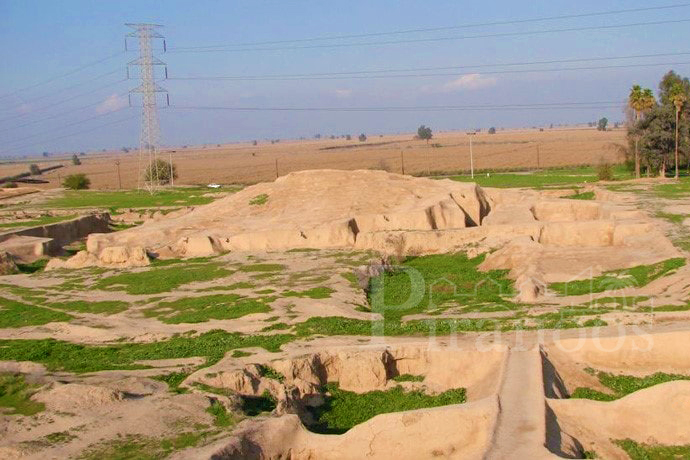Haft Tappeh is an ancient site in Khuzestan province, about 10 kilometers southeast of Shush (Susa). The site is composed of 14 ancient mounds that encompass the Kabnak city of Elamite civilization. The ancient remains of Haft Tappeh have long been a prominent feature of Khuzestan plain attracting many archeologists and tourists.
The Kabnak city has been an important political center during the reign of the Tepti-Ahar the Elamite king in the 15th century BCE. Initially, the site was accidentally found while plowing a sugarcane field. Haft Tappeh was first studied by J. De Morgan the French archaeologist in 1908. The excavation of the site started in 1965 by Iranian archaeologist Ezzat Negahban and continued by the Iranian Cultural Heritage Organization.
Architectural monuments found at Haft Tappeh include a large temple decorated with bronze plates and paint built for Tepti-Ahar and a subterranean funerary complex with remains of skeletons under the temple which was intended for the king and his dynasty.
Foundation of the ziggurat, courtyards, and series of rooms were also reviled. Artifacts found at the site include clay tablets, clay statuettes of goddesses, Cuneiform inscriptions, petroglyph, Stone and clay seals with artworks, clay vessels, agate necklaces, mosaics with geometric motifs made of a combination of azure, bone, mussel, and bronze, and brass objects such as daggers, arrows, bayonets, and many more which are exhibited at Haft Tappeh the museum located 15 km south-east of Susa.


